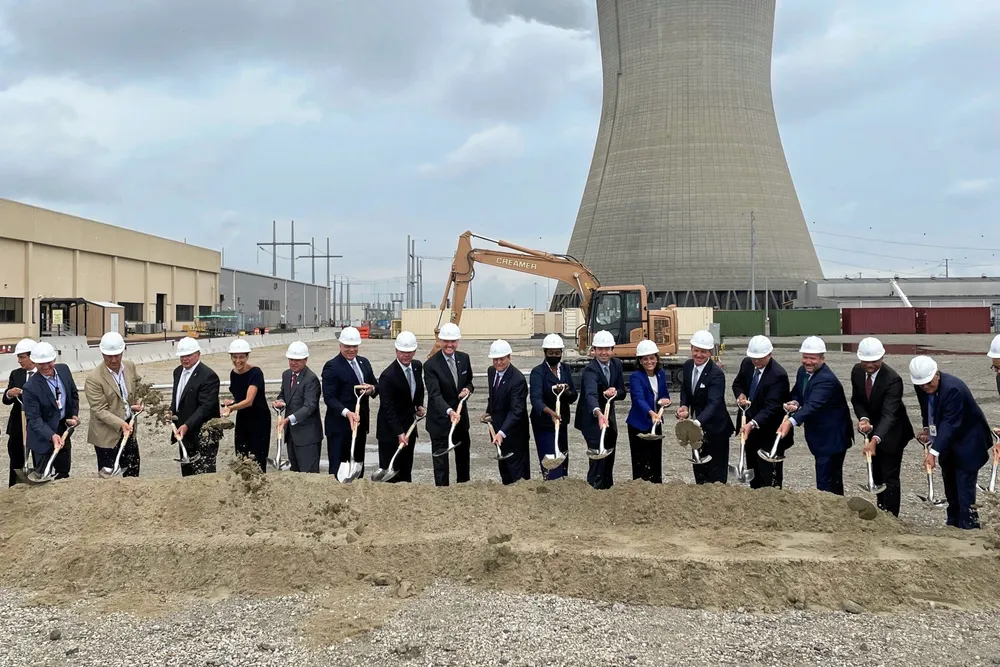Flagship US offshore wind port explores other options as sector battered
New Jersey's signature greenfield offshore wind facility now looking for alternatives to sector development

Over $1bn in New Jersey offshore wind infrastructure investment is at risk of being stranded as Governor Phil Murphy signaled a sector slowdown following cancellation of its latest procurement for up to 4GW.
“Developing the offshore wind industry in New Jersey is a once-in-a-generation opportunity,” Murphy said in a statement. However, the “industry is currently facing significant challenges, and now is the time for patience and prudence.”
Murphy has been a strong proponent of offshore wind, setting one of the nation’s most ambitious targets of 11GW by 2040 and greenlighting major supply chain investments.
Despite his support, offshore wind struggled to gain traction amid surging costs, supply chain turmoil, and local opposition.
New Jersey's offshore wind derailment is impacting Murphy's signature investment, the $1bn New Jersey Wind Port (NJWP) assembly and marshaling hub, the nation's largest greenfield purpose-built port for the sector.
“While recent developments at the federal level and announcements from offshore wind developers are deeply disappointing, they were not unexpected,” Sullivan said, adding that the agency has taken “a cautious approach to further development of the port since 2023.”
“We have worked to identify alternative uses that would maximise the economic development, job creation, and financial potential of the site for the State,” Sullivan added, without disclosing potential alternative uses.
Goundbreaking
The state broke ground on the NJWP in September 2021, with the intention of transforming the 200-acre (80 ha) site in Salem County adjacent to two nuclear power stations into a marshaling and assembly hub for the regional industry.
The port lost its first customer with Orsted’s cancellation of its 2.25GW Ocean Wind 1 & 2 arrays in 2023.
Its second customer, Atlantic Shores, which is developing a 1.5GW project for the state, just saw equity partner Shell “pause” its participation, heightening concerns over its future.
Atlantic Shores maintains that the existing project remains on track.
EEW Paulsboro
The state also poured at least $250m into nearby Paulsboro, site of German steel manufacturer EEW’s monopile manufacturing facility and port.
The site received over a dozen 2,200-tonne monopiles for Orsted's project that were built in Europe and shipped to Paulsboro for finishing that later needed to be scrapped .
Reportedly state-owned operator South Jersey Port Corporation had to step in to dispose of the monopiles.
Without Atlantic Shores, New Jersey likely won't see steel in the water until the 2030s, as the two other projects under contract, TotalEnergies-Corio's 1.4GW Attentive Energy 2 and Invenergy-energyRE's 2.4GW Leading Light have only recently entered the federal permitting process which Trump just shut down.
Even without a Trump halt, an offshore wind array takes years to wend through federal regulator 's permitting regime.
New Jersey also took the lead in offshore wind grid development to build out coastal infrastructure to inject over 6GW of sector power.
New Jersey-based construction firm Riggs Distler has been highly involved in the state’s infrastructure buildout, but said the demise of offshore wind would have little impact.
“For that reason, we do not anticipate material impacts for Riggs as a result of the changing offshore wind landscape.”
(Copyright)